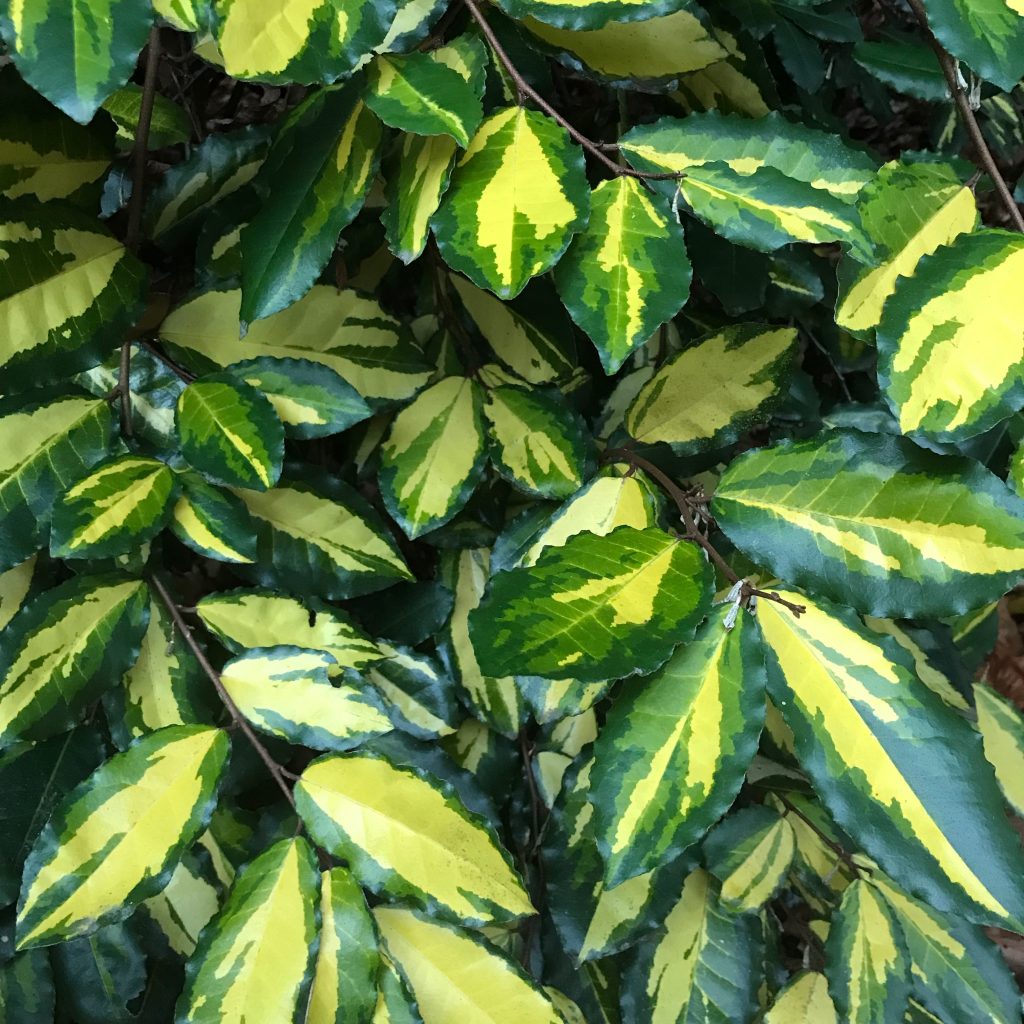No matter how you feel about the transition to fall, the unmistakably rich hues of our autumn foliage are something to look forward to.
Though deciduous trees have lost their leaves and winter is on its way, there are still many plants that can brighten your garden with colorful foliage. You don’t have to wait for the first blooms of snowdrops and hellebores to appear in late winter and early spring.
There are two categories of plants that will add colorful foliage to a winter garden: conifers (plants with needles and cones) and broad-leaf evergreens (plants that keep their leaves year ’round). Of course, these plants add depth to your garden during all the seasons, but when flowering plants and deciduous trees are dormant, these become important players and move onto center stage. Whether positioned en masse as a backdrop or at the forefront of a planting, colorful foliage provides contrast, supporting the rich shades of deep green in the surrounding plants and trees. And, if you add strategic lighting, you can brighten even the shortest day and darkest winter night.
Here are a few plants that will lighten up your garden this fall and winter.
Buxus sempervirens ‘Variegata’ (Variegated English Boxwood) has dramatic fine-textured foliage with creamy yellow margins that contrasts well with other darker green foliage. This boxwood can be grown as a clipped or unclipped specimen, suitable for use as a hedge, or a focal plant in a container garden, or repeated in a symmetrical composition. A versatile plant, it’s easy to grow in a variety of conditions.
Choisya ternata ‘Sundance’ (Sundance Mexican Orange) produces bold yellow-green new growth that matures to a vibrant grass-green. This bright foliage creates dynamic combinations with other colorful foliage such as blue, gray, burgundy and dark purple. Tolerant of many soil types, but needs some sun for the best color.
Elaeagnus pungens ‘Maculata’ (Maculata Golden Elaeagnus) has dramatic leaves with chiffon yellow centers that contrast with rich, two tone-green margins. Each leaf of the plant has a different pattern, giving the plant amazing depth and texture. You’ll find it performs well in sun or shade. It’s perfect for a dark spot in your garden.
Fatsia japonica ‘Camouflage (Camouflage Japanese Aralia) has big palmate leaves and highly textured yellow, lime, and green foliage that will illuminate the dappled shade locations where it does best. The large leaves and open habit give it an exotic, almost tropical look.
Ligustrum sinense ‘Sunshine’ (Sunshine Ligustrum) has intense golden-yellow foliage that makes a statement. Plant it en masse, or as part of a vibrant foliage combination, or use it as a centerpiece in a container garden. Be sure to use this plant strategically, ensuring it will not visually dominate a combination planting. Not that this ligustrum requires a sunny location.
As you create the master plan for your garden, keep in mind that artful composition—balanced with repetition for continuity—will minimize seasonal downtime and ensure that all parts of your garden flow together seamlessly from just about any viewpoint. Avoid the temptation of random plant selections! You want to make sure whatever you plant is part of a thoughtful, comprehensive plan.
If you’re looking for more ideas, please contact me for a design consultation to learn about landscape design or the best plants for any spot in your garden.
